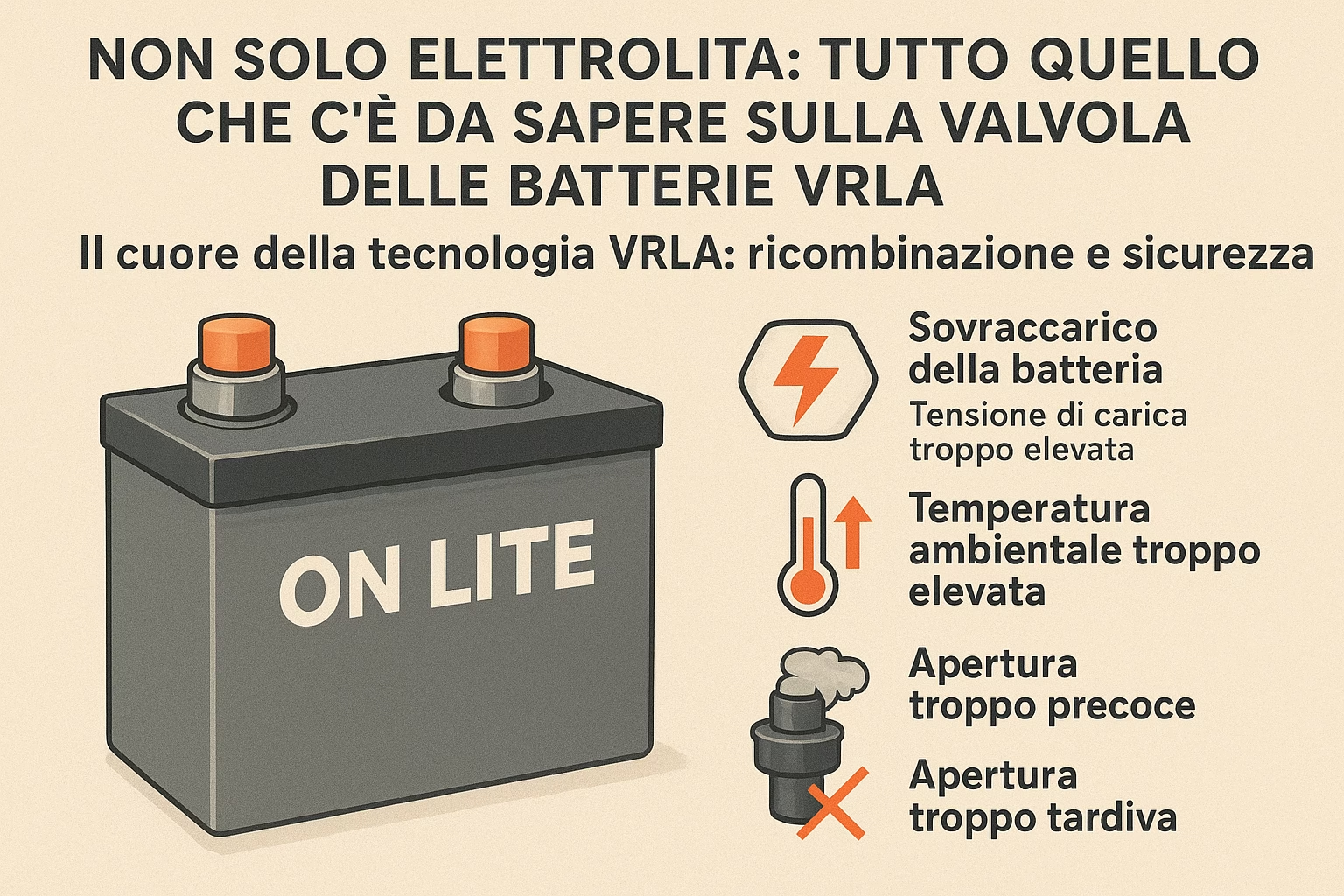When we talk about sealed lead-acid batteries (VRLA – Valve Regulated Lead-Acid), most attention goes to the plates or the electrolyte. Yet, there’s a small and often overlooked component that plays a crucial role in safety and performance: the safety valve.
This tiny device is what turns a potentially hazardous battery into a safe, reliable product.
In this article, we’ll explore how the VRLA valve works, its role in everyday use, and why its quality is a key indicator of the battery’s overall reliability.
The Core of VRLA Technology: Gas Recombination and Safety
The fundamental principle behind VRLA batteries is gas recombination.
During charging, especially under high load, the electrolyte water can split into hydrogen and oxygen. In conventional batteries, these gases escape into the air, requiring frequent water refills.
In VRLA batteries, however, a controlled chemical reaction allows over 95% of the gases to recombine internally, forming water again. This is what makes them “maintenance-free” batteries.
But what happens to the remaining 5% of gas—or under abnormal conditions?
That’s where the VRLA valve comes in.
It’s not a simple vent, but a precision-calibrated safety device.
Under normal operation, the valve stays hermetically sealed, preventing external oxygen from entering (which would corrode the plates) and maintaining the internal recombination process. It only opens when internal pressure exceeds a specific threshold (typically between 4 and 20 kPa), releasing excess gas in a controlled way and preventing swelling, cracks, or explosions.
Practical Implications: Maintenance, Safety and Quality
1. The Valve as a Maintenance Indicator
If a VRLA valve opens frequently or stays open, that’s a red flag. It usually signals one of the following:
- Overcharging – the charging voltage is too high, producing excessive gas.
- High ambient temperature – heat accelerates chemical reactions, increasing internal pressure.
Each time the valve opens, a small amount of water vapor and electrolyte is lost.
This loss is irreversible, leading to electrolyte drying and a shorter battery life.
Monitoring charging voltage and temperature is the best way to keep the valve closed and the battery healthy.
2. Safety: Debunking the “Totally Sealed” Myth
Many people describe VRLA batteries as totally sealed, which is technically incorrect—and risky.
They are hermetically sealed, but not completely airtight.
The valve allows a small, controlled gas release when needed. That’s why rooms containing VRLA batteries must be properly ventilated according to safety standards (such as CEI 64-8).
Adequate ventilation prevents hydrogen buildup, which could otherwise become flammable, ensuring safety for both people and equipment.
3. Valve Quality Defines Battery Quality
Not all valves are the same. A cheap or poorly designed valve can behave in two equally harmful ways:
- Opens too early: causes unnecessary gas loss and electrolyte drying.
- Opens too late: risks physical damage or even rupture under pressure.
At ON LITE, we know that true reliability starts with precision components.
Our VRLA batteries are equipped with high-accuracy safety valves, carefully calibrated to maintain ideal internal pressure across a wide operating range.
This maximizes gas recombination, minimizes electrolyte loss, and ensures the valve activates only when absolutely necessary.
Conclusion
Next time you evaluate a VRLA battery, take a closer look at that small plastic and rubber part.
The safety valve is the silent guardian of your system — protecting your investment and ensuring that your backup power supply remains safe and efficient over time.
Choosing a VRLA battery with high-quality components, such as those from ON LITE, means investing in a product built for safety, performance, and long-term reliability.
Have questions about selecting or maintaining your UPS batteries?
Contact ON LITE’s technical experts for personalized advice and discover how quality engineering makes all the difference.



Leave a Reply